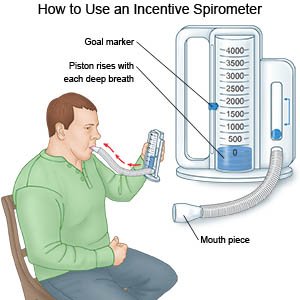Needle Biopsy of the Lung
Medically reviewed by Drugs.com. Last updated on Aug 4, 2025.
A needle biopsy of the lung is a procedure to remove cells or tissue from your lung. The samples are collected and tested for inflammation, infection, or cancer.
 |
DISCHARGE INSTRUCTIONS:
Call your local emergency number (911 in the US) if:
- You have any of the following signs of a pneumothorax (collapsed lung):
- Sudden chest pain or shortness of breath
- Coughing up a large amount of blood
- You have any of the following signs of a heart attack:
- Squeezing, pressure, or pain in your chest
- You may also have any of the following:
- Discomfort or pain in your back, neck, jaw, stomach, or arm
- Shortness of breath
- Nausea or vomiting
- Lightheadedness or a sudden cold sweat
- You have any of the following signs of a stroke:
- Numbness or drooping on one side of your face
- Weakness in an arm or leg
- Confusion or difficulty speaking
- Dizziness, a severe headache, or vision loss
Seek care immediately if:
- You have dizziness, a severe headache, or vision loss.
Call your doctor if:
- You have a fever.
- You have pus, redness, or swelling around your biopsy area.
- You have a new cough.
- You have questions or concerns about your condition or care.
Medicines:
- Acetaminophen decreases pain and fever. It is available without a doctor's order. Ask how much to take and how often to take it. Follow directions. Read the labels of all other medicines you are using to see if they also contain acetaminophen, or ask your doctor or pharmacist. Acetaminophen can cause liver damage if not taken correctly.
- Prescription pain medicine may be given. Ask your healthcare provider how to take this medicine safely. Some prescription pain medicines contain acetaminophen. Do not take other medicines that contain acetaminophen without talking to your healthcare provider. Too much acetaminophen may cause liver damage. Prescription pain medicine may cause constipation. Ask your healthcare provider how to prevent or treat constipation.
- Take your medicine as directed. Contact your healthcare provider if you think your medicine is not helping or if you have side effects. Tell your provider if you are allergic to any medicine. Keep a list of the medicines, vitamins, and herbs you take. Include the amounts, and when and why you take them. Bring the list or the pill bottles to follow-up visits. Carry your medicine list with you in case of an emergency.
Related medications
Care for the biopsy site:
Ask your healthcare provider when your biopsy site can get wet. Carefully wash around the site with soap and water. It is okay to let soap and water run over the site. Dry the area and put on new, clean bandages as directed. Change your bandages when they get wet or dirty. You may be told to leave the biopsy site without a bandage.
Deep breathing:
Deep breathing opens the tubes going to your lungs. Slowly take a deep breath and hold the breath as long as you can. Then let out your breath. Take 10 deep breaths in a row every hour while awake. You may be asked to use an incentive spirometer to help you with this. Put the plastic piece into your mouth and slowly take a breath as deep and as long as you can. Hold your breath as long as you can. Then let your breath out.
 |
Activity:
- Rest can help your body heal.
- Avoid lifting 5 pounds or more for up to 1 week after your biopsy. Bleeding may happen if you lift more than 5 pounds. Follow your healthcare provider's directions for lifting and straining.
- Do not fly in an airplane or scuba dive. These activities change the pressure in your lungs and can cause an air embolism.
- Go for a walk. Start slowly. Walk a little farther each day. Walking helps prevent pneumonia.
Do not smoke:
Nicotine and other chemicals in cigarettes and cigars can cause lung damage. Ask your healthcare provider for information if you currently smoke and need help to quit. E-cigarettes or smokeless tobacco still contain nicotine. Talk to your healthcare provider before you use these products.
Follow up with your doctor as directed:
You may need to return for more tests. Write down your questions so you remember to ask them during your visits.
© Copyright Merative 2025 Information is for End User's use only and may not be sold, redistributed or otherwise used for commercial purposes.
The above information is an educational aid only. It is not intended as medical advice for individual conditions or treatments. Talk to your doctor, nurse or pharmacist before following any medical regimen to see if it is safe and effective for you.
Further information
Always consult your healthcare provider to ensure the information displayed on this page applies to your personal circumstances.
